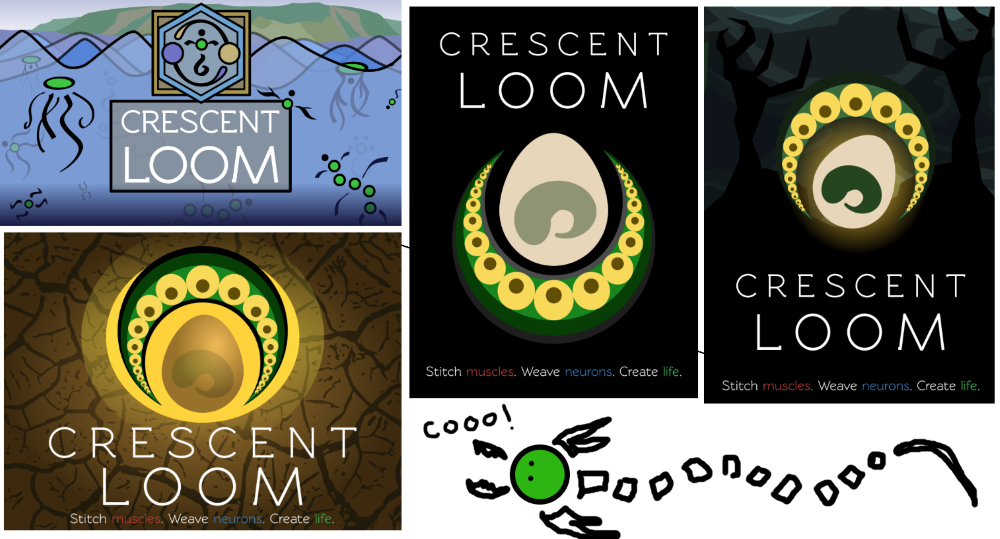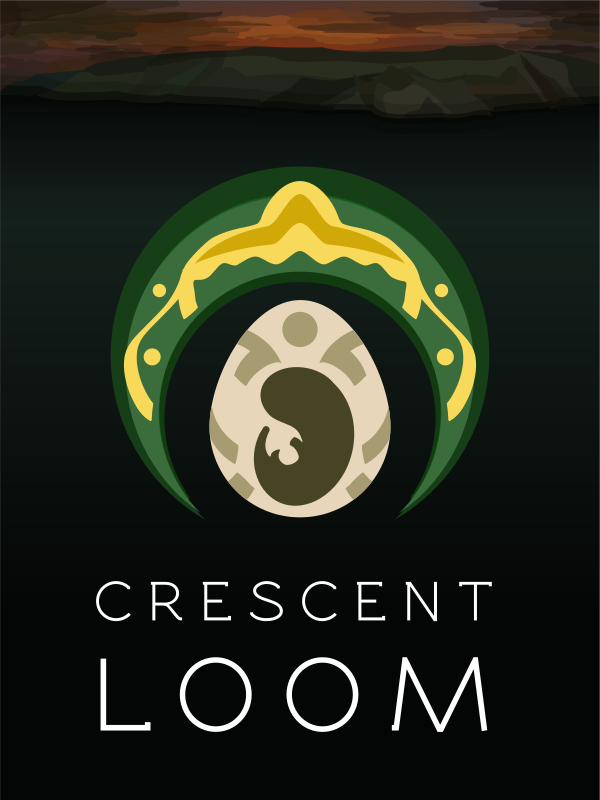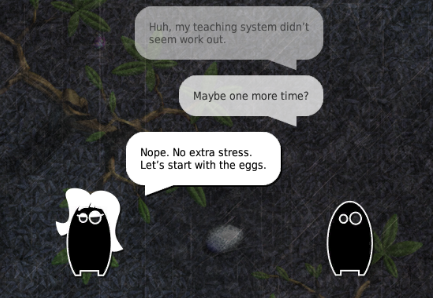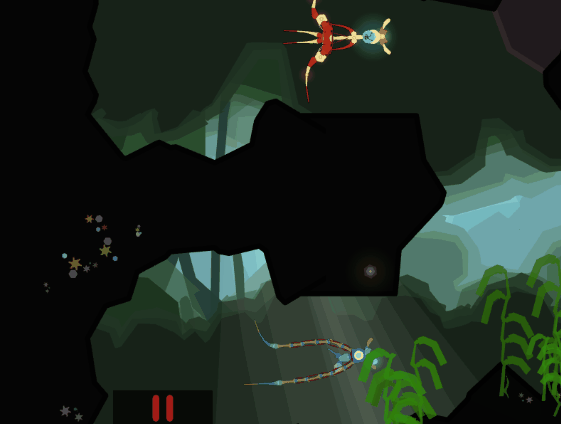Wicklog #11 - Book-covers, narrative framing, and races.
Agh, I thought it’d been a weirdly long time since I wrote one of these. With all the travel, I got bumped off my every-two-week schedule and then Google calendar didn’t remind me til now. Ah well. I have a lot to talk about.
First up, I wrote a section about different funding avenues I'm looking at for after the Kickstarter wraps up, decided it was too long, and broke it off into its own post here. They're some good notes & are worth a read, imho.
Box Art
Shiniest thing second: seeing Rose City Games’ excellent new branding got me thinkin’ about Crescent Loom’s logo. The current version is pretty abstract, and its meaning is not in any way obvious.
If people have to read a book to be able to parse the cover, the cover ain’t doin’ its job. So I asked myself: what’s the core message I want the packaging to send? My tagline sums it up pretty well, I think:
Stitch muscles. Weave neurons. Create life.
Of those, the most generally-compelling is the creation of life. The emotional journey of Crescent Loom is going to be bringing life back into a ruined world, so I threw together a few posters based on that and asked for feedback on the Portland Indie Game squad slack.
They immediately twigged onto the fact that I basically stole the right two from Alien, which have good, clear iconography, but were colder and darker than I wanted. The warmth of the bottom-left felt better.
So! I warmed things up just a pinch with a sunset:
A few people have mentioned they missed the circles in the crescent shape, but they were more overbearing and less nurturing than I wanted. It’s prettier as a whole, but I think it's missing an emotional punch. Something to keep working on when my eyes can take no more code.
Narrative Framing
A glaring current omission in Crescent Loom is the lack of any kind of framing device. Why are you making creatures? Who are you, even? Is this supposed to be science fiction or is it just a glorified physics engine?
It doesn’t take much to give a player their bearings. For instance, Insatia just shows you a couple talking shadow-blobs, says “we’re scientists working on controlling small worms from a distance”, and throws you in.
It’s not fancy, but helps tremendously to smooth the transition between game states and in helping player understand their objectives. To start work on situating the player in Crescent Loom (at least a little), I’ve turned the level-select screen into a world map:
(It may also have been an excuse to partake in some worldbuilding and geology fanfiction.)
Gameplay
I started writing another long section on core gameplay loops and direct/indirect control of characters in games, but I think that’s enough for this week. I’ll save the explanation for next time and just give you the punchline: I’m re-adding racing and making that the main gameplay focus for the Kickstarter version of Crescent Loom!
Finally, I’m going to be showing Crescent Loom near PAX West at the Seattle Indies Expo on September 3rd! If you’re going to PAX, this is a great auxillary event that’s basically next-door.
Thanks for readin’
:)
Wick












